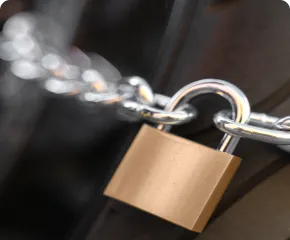 How to get a license
How to get a license for free!
More →
 Crypto exchange
Crypto exchange 

 Version: 22.040
Version: 22.040
 Updated: 11.04.2022
Updated: 11.04.2022
 Added: 30.08.2017
Added: 30.08.2017
License: Paid-Free
One-time purchase: 122$69$
Rent: from 30$from 21$
The program trades according to a unique logic, the task of which is not just to fix the profit, but also to use the accumulated profit as a safety cushion, which significantly reduces the drawdown on the balance.

 Version: 16.120
Version: 16.120
 Updated: 13.12.2016
Updated: 13.12.2016
 Added: 10.09.2014
Added: 10.09.2014
License: Free
One-time purchase: 0$
Rent: from 0$
The expert Advisor's interface is intuitive and easy. The EA hides the take Profit, Stop Loss, Breakeven, and Trailing Stop trading levels.

 Version: 24.121
Version: 24.121
 Updated: 13.12.2024
Updated: 13.12.2024
 Added: 22.08.2017
Added: 22.08.2017
License: Paid-Free
One-time purchase: 122$85$
Rent: from 30$from 21$
VR Black Box is a powerful trading system built on the principle of following price movements. The trading robot has access to the functions of setting both real and virtual Take Profit and Stop Loss levels. The main objective of the algorithm is to maximize profits and minimize risks.
The VR Black Box system uses a combination of real and virtual stop loss and take profit levels, with the real levels hiding the virtual ones. The development of this strategy began in 2009, and over a period of more than ten years it has undergone many improvements and revisions. The principle of operation is reminiscent of the “Swing” strategy, when a purchase error is compensated by entering a sale. A special feature of the system is the presence of protective mechanisms to prevent getting into high-risk situations.
In 2021, cryptocurrencies appeared in the lists of instruments of almost every Forex broker. The reason for their wide adoption and popularity were important differences from fiat currencies:
There are no rules and standards in the cryptocurrency market, they work as their code was written, often by anonymous developers. The openness of the digital currency algorithm is a prerequisite for this industry. The code and all updates are usually freely available on the largest web hosting of IT projects, GitHub.
Along with the code, there is a program that executes the algorithm, which generates digital money in the form of blocks, with a specified frequency from a few seconds to tens of minutes. As a rule, to get this cryptocurrency, you need to do complex calculations and decrypt the coins hash code.
This is done by miners who have downloaded and installed the program (client) from the site. Along with the hash search, they are busy filling blocks with transactions. Cryptocurrency transactions are confirmed after the block is attached to the blockchain. This is a continuously collected chain, whose copy is stored and constantly updated by every miner, so-called node holder.
A new user of the network, who decides to mine cryptocurrency, first downloads the entire history of the blockchain (deploys the node) and only then he can start mining. The probability that he will find the hash of the block, receiving the coins encrypted in it (reward), is equal to the computing power of his device, divided by the power of all devices on the network.
The collected block of transactions must be verified by all miners in the network. It takes little time, unlike searching for the block hash code. Only then is it added to the general blockchain, simultaneously generating a hash code with new coins to search for the next block.
The information that gets into the network can not be changed, which guarantees the reliability of the transactions carried out. The history of all transactions is public, it can be viewed by blockchain explorers.
The anonymity of transactions is ensured by the code name of the wallet, which can be opened by anyone, just by downloading this program from the developer's website. In fact, the digital currency never "leaves" the blockchain, its owner is connected to it by two keys with a public and secret address.
They are generated in the wallet along with a special seed phrase. With its help, the user can restore access to the cryptocurrency from any device, even without keys. The loss of keys and phrases or the sending coins to the wrong address is an irretrievable loss of an asset.
The reliability of the cryptocurrency is determined by the absence of vulnerabilities in the code and decentralization – the number and geographical diversity of nodes. The Bitcoin code has been working without failures for 12 years, more than 10 thousand nodes are involved in the cryptocurrency mining, the number of which is constantly growing.
Bitcoin blocks are mined at a rate of one every 8-12 minutes, depending on this time, the cryptocurrency algorithm automatically increases or decreases the complexity of mining, simplifying or complicating calculations.
The creator of the code - Satoshi Nakamoto - limited the number of coins to 21 million BTC. The identity of this programmer is still unknown, but the Bitcoin ecosystem he invented is unique in its simplicity. Every 4 years, the block reward is halved and will disappear completely in 2140.
The three halvings that took place in the Bitcoin network (2012, 2016, 2020) showed an interesting pattern of the impact of this event on the value of the cryptocurrency. Embedded by the algorithm, the reward reduction leads to a subsequent or preliminary twofold increase in the value of BTC.
The cost of mining serves as a resistance level or the bottom of the value of Bitcoin at the time of crisis falls. Cryptocurrency quotes have declined three times in the 12-year history from highs of more than 80% of the value, but subsequently always rose to new heights, justifying growth forecasts.
The economic crisis of 2020 tested both of the theories described above. On the "Black Thursday " on March 12, Bitcoin collapsed to the bottom of its production cost, which was the starting point of a new super cycle of the digital currency growth.
At the time of the halving, the BTC rate was around $10,000 and doubled at the end of the year. At the time of writing, the cryptocurrency market was covered by an understandable correction, given the almost twofold increase in the value of BTC since the beginning of the year.
Judging by the rates of large institutional players on the LedgerX options exchange, they predict the growth of Bitcoin by the end of the year to the level of $100000, not excluding the probability of a fall to $25000 by June 2021.
Given the peculiarity of the protracted growth areas of Bitcoin, it is worth noting the tactics of the pyramid - purchases in parts. This will allow you to average the position when the rate is falling and safely increase the deposit using the trailing stop.
With the help of the VR Smart Grid Expert Advisor, the construction of such a position is solved automatically. The robot opens trades independently on the trend with the specified lot as soon as the conditions for making a profit on the previous position are met. It is covered by the breakeven, which then moves to the positive profit zone.
If the trader uses a VPS service, then VR Smart Grid can trade around the clock, completely automatically. The trader may add a deposit if he decides to increase the pyramid of transactions or fix a part of the profit when the price of BTC reaches the profit goals set by him.

 Even more in the Telegram community
Even more in the Telegram community


 Send us a message
Send us a message 
Comments